🍋 Citrus
Mandarin, Kinnow, Sweet Orange, Sweet lemon, Grape Fruit, Lime, Important points, varities, pests
- Classification of citrus was given by Tanka & Swingle (1945).
- Spain is largest exporter of citrus.
- Ultra dwarf rootstock of citrus: Flying dragon.
- Fruit ripening: 9 month after planting.
Mandarin
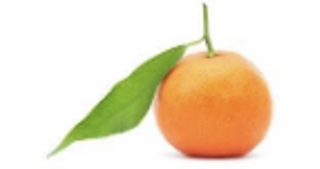
- Botanical Name:
Citrus reticulata - Family: Rutaceae
- Origin: China
- Most common among citrus fruits grown in India.
- Mandarin occupies 50 % area under citrus spp.
- Seeds of citrus don’t have dormancy so they should be sown immediately after extraction.
- Blooming-three time in a year.
- Mandarins are highly susceptible to water logging.
- Rootstock for HDP: Troyer citrange (1.8 x 1.8 m2).
- Rangpur lime — most promising rootstock for mandarin and sweet orange.
- Rootstock — Adajamir [C. assamensis] are resistant to Greening.
- Spacing of lime, lemon and sweet orange is
6 m x 6 m - Best time for Pruning —
Late winterorEarly spring. - Mandarin, sweet orange, Acid lime, grape fruit:
Highly polyembryonic. - Pummelo, Tahiti lime, Citron: Monoembryonic.
- Citrus fruits have a special kind of fruit skin referred as ‘leathery rind’.
- Citrus is micro-nutrient loving plant.
- Trifoliate orange-resistant to phytopthora and nematodes.
- Limolin-glycoside is responsible for bitter taste of citrus fruit juice.
- Nagpur mandarin was introduced in India in 1894 by Shuji Raja Bhosle.
- Irrigation requirement of mandarin is higher than other citrus species.
- Weeds are serious problem in nursery. So, bromocial is most effective weedicide in controlling monocot and dicot weed.
- State with highest production of citrus in India is Andhra Pradesh followed by Maharastra.
- Sikkim is the only place where mandarin are packed in wooden boxes.
Varieties
- Coorg: Most important commercial variety in South India (Karnataka).
- Kodai orange: Tamil Nadu
- Khasi: Locally known as Sikkim or Kamla mandarin. (North-East India)
- Nagpur Santra (Ponkan): Finest mandarin in the world. Grown in Satpuda hills in Maharashtra.
- Laddu mandrain
- Sutwal: Introduced from Nepal.
- Satsuma (seedless): Commercial mandarin of Japan.
- Emperor and Fuetrelles: Introduction from Australia.
Kinnow
- It is high yield mandarin and cross between
King SweetxWillow Leaf mandarins - Developed by H.B. Frost, USA -1935.
- Kinnow was introduced in India in 1959.
- It was first introduced in Punjab.
- It’s juicier than oranges and is majorly grown in Punjab, Himachal Pradesh, Jammu & Kashmir, Rajasthan and even Haryana.
- Kinnow can be grown in high density planting by using ‘Troyer citrange’ as a rootstock by spacing the plants at 1.8 x 1.8 m2 (3000 plants/hac).
- A kinnow is generally dark in colour while the colour of an orange varies from saffron to light orange colour.

Sweet Orange
- Botanical Name:
Citrus sinensis - Family: Rutaceae
- Origin: China
- Pre-harvest fruit drop is common in citrus. It is due to:
- Physiological factors
- Pathological factors
- Control measure-spray of 2, 4-D (20 PPM). Most prone variety Mosambi & Blood Red.
- Degreening of citrus fruits is done by CaC2 (Calcium Carbide).
- Best time for pruning — late winter or early spring.
- Sweet orange is susceptible to water logging and phytopthora rot, so water stagnation in orchard should be avoided.
- Double ring method - best for irrigation.
- Deficiency of zinc along with N, is major nutritional problem of sweet orange.
- Rangpur lime is the best rootstock for mosambi.
- ‘T’ budding or Patch budding are most common method for sweet orange propagation.
- Pineapple and Valencia - indicator of greening.

Varieties
- Hamlin: Early variety
- Jaffa: Mid-season variety
- Pineapple: Mid-season variety
- Valencia: late season variety
- Mosambi: Most popular in Maharashtra, Best rootstock— Rangpur lime
- Satgudi: Most popular in Andhra Pradesh, Best rootstock— Rough lemon.
- Blood red: Most popular in North India Best rootstock— Karnakhatta, Jatti khatha.
- Shamouti: Seedless variety
- Washinghton navel
- Batavin
- Mudkhed - Bud mutant of Nagpur mandarin.
Lime/ Kagzi Lime (Khata Nimbu or Chota nimbu)
- India rank 5th among major lime and lemon producing country in the world.
- Sweet lime: Citrus limetoides, Native-India, self-incompatible.
- Tahiti lime: Citrus latifolia — seedless triploid.
- Rangpur lime: Citrus limenica, native - India
- Pummelo: Citrus grandis (largest fruit), self-incompatible.
- Acid lime is only propagated by
seeds. - Kagzi lime (C. aurantifolia) is the indicator plant for Tristeza (highly susceptible to this disease).
- Citrus canker is most serious disease of acid lime.
- Acid-lime is tropical plant.
- Lemons are divided into 4 groups:
- Eureka
- Lisbon
- Anamalous
Sweet lemon
- Gajanimma (Citrus Pennivesiculata) is most promising rootstock followed by rough lemon for acid lime.
- Sweet lime contain — nonacid juice.
- Sweet lime is resistant to greening.

Acid lime/kagzi lime varieties
- Pramalini: Canker tolerant
- Vikram
- Chakradhar: Seedless variety of Acid lime.
- PKM-1
- Sai sarbati: Tolerant to tristiza and canker.
- Jai devi: Pleasant Aroma
- Sweet lime Varieties
- Mitha chikna
- Mithotra
- Lemon Varieties
- Eureka
- Lucknow seedless
- Lisbon
- Kagzikalan
- Nepali oblong
- Nepali round
- Pant lemon-I-self-incompatible.
- Villafrance - belong to Eureka group.
Grape Fruit

- Botanical Name: Citrus paradisi
- Family: Rutaceae
- Grape fruit is also known as forbidden fruit/ breakfast fruit.
- Citron — Persian apple.
- Citron — glucoside present-Hespiridin.
- Varieties
- Star ruby: From Hudson grape fruit through mutation breeding.
- Red Blush
- Duncan
- Marsh Seedless
- Foster
- Triumph
- Sharanpur Special
- Thompson
Flowering in Citrus

Diseases of Citrus
- Gummosis: Phytophthora spp.
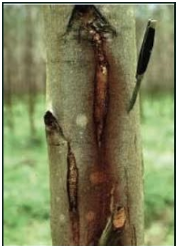
- Bacterial canker: Xanthontonas compestris p.v. citri (transmitted by leaf minor)
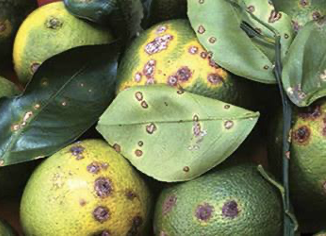
- Citrus greening:
- Earlier Mycoplasma (now causal organism is Caliberobacter, a gram negative, walled, bacteria).
- Transmitted by citrus psylla, Diaphorina citri
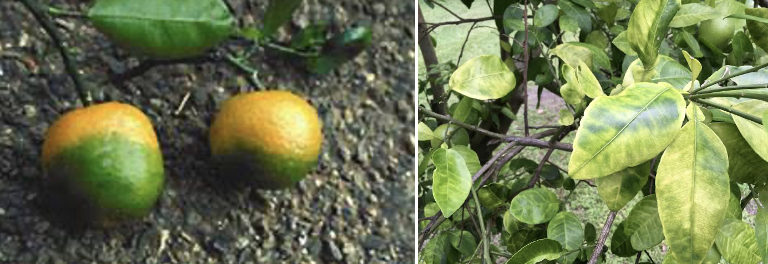
- Tristeza: Virus (vector is aphids: Toxoptera sp.)
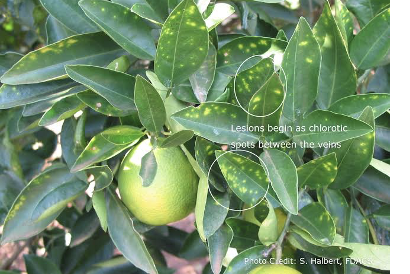
- Exocortis: Viroids.
Physiological disorder
- Granulation: Due to high temperature & R.H. during ripening. It is managed by spray lime & application of 2, 4-D (12 ppm). The juice vesicle become hard, enlarged and turn opaque grayish in colour.
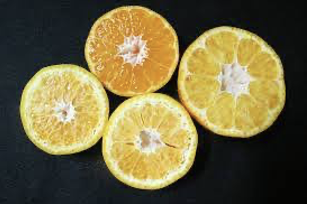
- Fruit Cracking
- It is due to sudden changes in temperature and also due to moisture stress condition.
- Yellow leaf of citrus: Mo deficiency.
- Die back due to: Copper deficiency
- Exanthema: Copper deficiency.
- Little leaf: Copper deficiency
- Mottle leaf: Zinc deficiency
- Citrus Decline

Insect-pest
- Psylla: Diaphorina ctri (vector of greening disease)
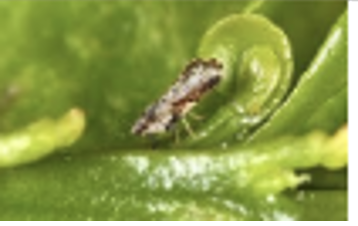
- Leaf minor: Phyllocnistis curella (vector of citrus canker)
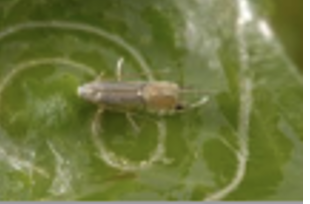
- Aphids: Toxoptera auranti (vector of Tristeza disease).
- Lemon butterfly: Pupil demoleus. (Controlled by bagging of fruits).

- Fruit sucking moth: Othreis fullonica (only adult suck the juice from ripening fruits).

- Classification of citrus was given by Tanka & Swingle (1945).
- Spain is largest exporter of citrus.
- Ultra dwarf rootstock of citrus: Flying dragon.
- Fruit ripening: 9 month after planting.
Mandarin

- Botanical Name:
Citrus reticulata - Family: Rutaceae
- Origin: China
- Most common among citrus fruits grown in India.
- Mandarin occupies 50 % area under citrus spp.
- Seeds of citrus don’t have dormancy so they should be sown immediately after extraction.
- Blooming-three time in a year.
- Mandarins are highly susceptible to water logging.
- Rootstock for HDP: Troyer citrange (1.8 x 1.8 m2).
- Rangpur lime — most promising rootstock for mandarin and sweet orange.
- Rootstock — Adajamir [C. assamensis] are resistant to Greening.
- Spacing of lime, lemon and sweet orange is
6 m x 6 m - Best time for …
Become Successful With AgriDots
Learn the essential skills for getting a seat in the Exam with
🦄 You are a pro member!
Only use this page if purchasing a gift or enterprise account
Plan
Rs
- Unlimited access to PRO courses
- Quizzes with hand-picked meme prizes
- Invite to private Discord chat
- Free Sticker emailed
Lifetime
Rs
1,499
once
- All PRO-tier benefits
- Single payment, lifetime access
- 4,200 bonus xp points
- Next Level
T-shirt shipped worldwide

Yo! You just found a 20% discount using 👉 EASTEREGG

High-quality fitted cotton shirt produced by Next Level Apparel